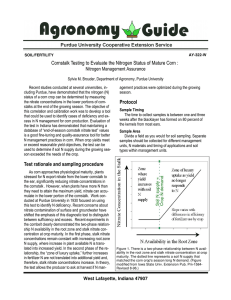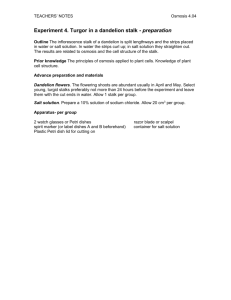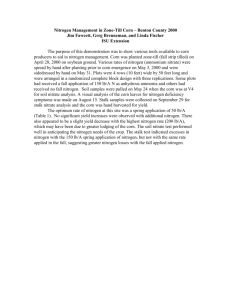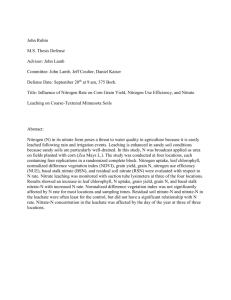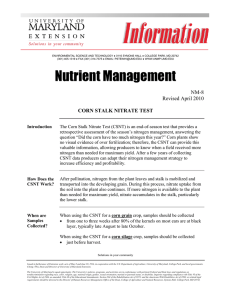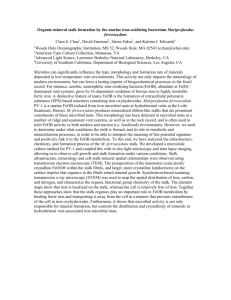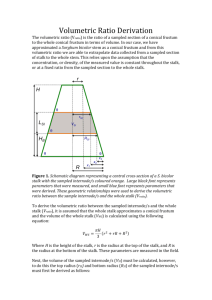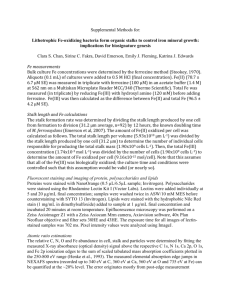Iowa Farmer Today 09-09-06 Simple tests for nitrates, rot in corn stalks
advertisement
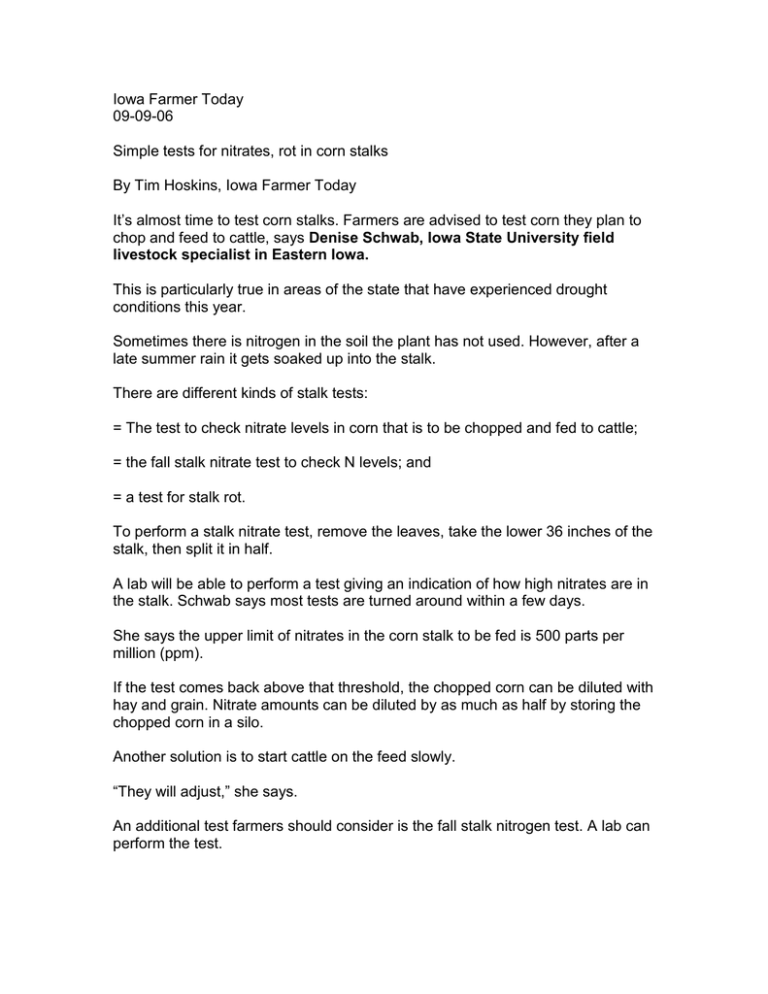
Iowa Farmer Today 09-09-06 Simple tests for nitrates, rot in corn stalks By Tim Hoskins, Iowa Farmer Today It’s almost time to test corn stalks. Farmers are advised to test corn they plan to chop and feed to cattle, says Denise Schwab, Iowa State University field livestock specialist in Eastern Iowa. This is particularly true in areas of the state that have experienced drought conditions this year. Sometimes there is nitrogen in the soil the plant has not used. However, after a late summer rain it gets soaked up into the stalk. There are different kinds of stalk tests: = The test to check nitrate levels in corn that is to be chopped and fed to cattle; = the fall stalk nitrate test to check N levels; and = a test for stalk rot. To perform a stalk nitrate test, remove the leaves, take the lower 36 inches of the stalk, then split it in half. A lab will be able to perform a test giving an indication of how high nitrates are in the stalk. Schwab says most tests are turned around within a few days. She says the upper limit of nitrates in the corn stalk to be fed is 500 parts per million (ppm). If the test comes back above that threshold, the chopped corn can be diluted with hay and grain. Nitrate amounts can be diluted by as much as half by storing the chopped corn in a silo. Another solution is to start cattle on the feed slowly. “They will adjust,” she says. An additional test farmers should consider is the fall stalk nitrogen test. A lab can perform the test. To prepare a sample, farmers should take 15 samples for every 10 acres, says Virgil Schmitt, ISU crop specialist in Southeast Iowa. The samples should be taken one to three weeks after black layer. To prepare a sample, he recommends cutting the stalk at 6 and 14 inches above ground. Schmitt says the sample should have as little rot as possible. Many labs will send back an explanation along with the results. If the results come with more than 2,000 ppm, there was more than enough nitrogen for the crop. If the results are between 700-2,000 ppm, nitrogen was adequate. If the results were under 700 ppm, nitrogen was a limiting factor. However, Schmitt warns weather has a big influence on results. In drought conditions, the numbers could be artificially high because the nitrogen was soaked up after a rain, and the plant didn’t use it. If it didn’t rain, the plant might not be able to take up the nitrogen, and the results might show a nitrogen deficiency. Don’t make management decisions based on a single test, Schmitt advises. He says farmers also should use the late-spring nitrate test with the fall stalk nitrate test over years to hone their nitrogen management. If both tests over a couple years result in too much nitrogen, Schmitt says a farmer should consider changing their management. He encourages farmers to do their own trials. Also, yields help refine nitrogen management. While still in the field, Schmitt recommends farmers check for stalk rot before harvest. One clue stalk rot may be present is a green plant next to a dead plant. He says the wet, cool spring might have fostered stalk rot in the state. Last year, during the drought in Eastern Iowa, Schmitt says stalk rot was found. Stalk rot develops in drier conditions because fungi which cause stalk rot are opportunistic, and if they find a weakened plant, they will seize the opportunity, he explains. Schmitt advises farmers to either pinch the stalk or do the lean test. The lean test is simple, push the corn plant and see how it bounces back. These same tests or doing a root dig can be used to check for weak roots. The weak roots are result of heavy rootworm feeding. Schmitt noticed increased rootworm feeding in second year corn in Eastern Iowa. The first-year corn looked attractive to the first-year rootworm moths when they were laying eggs, he explains. While nothing much can be done about changing stalk rot or a weakened root system now, he suggests farmers who have those situations, put those fields at the top of the list for harvesting. “It is worth it to pay for the extra LP,” he says.
